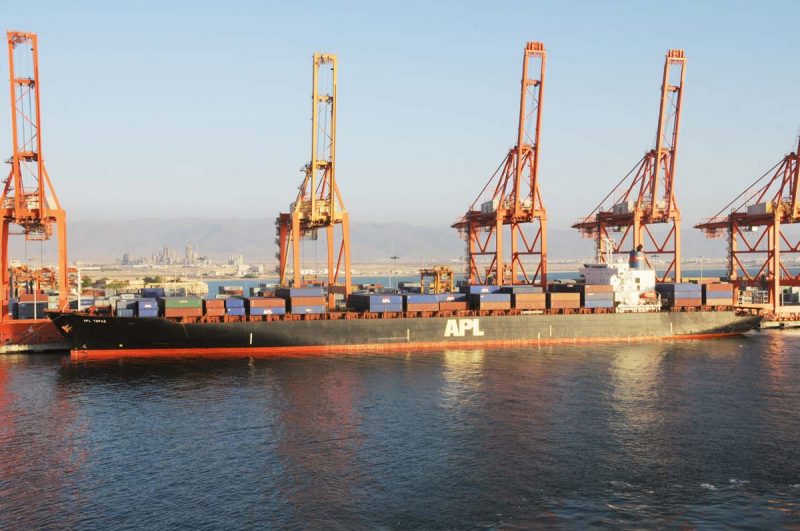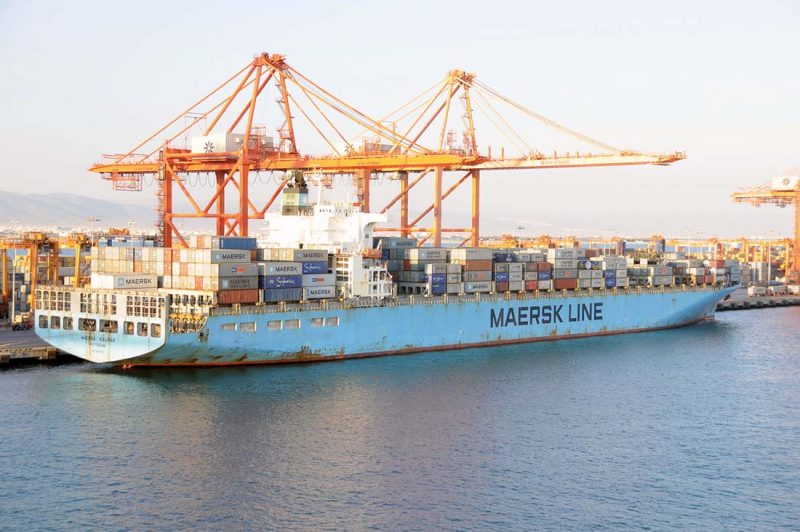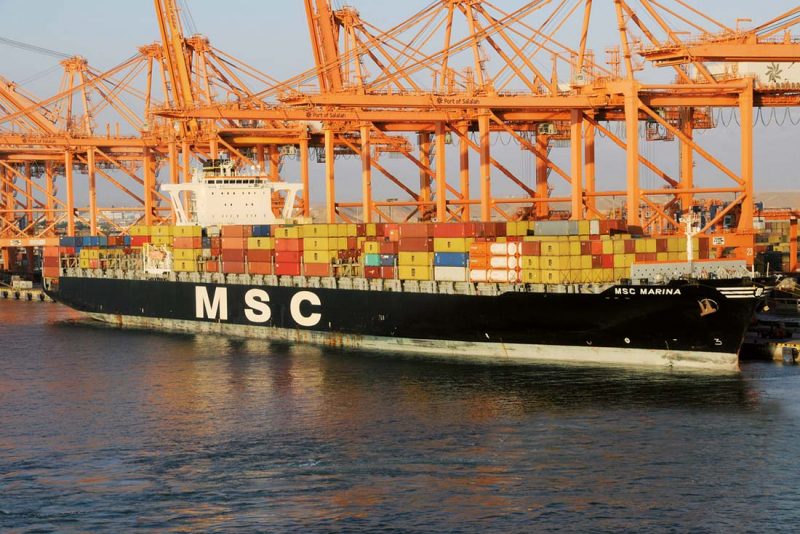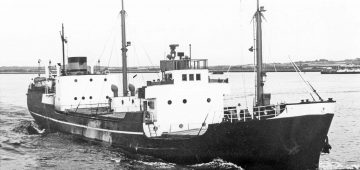Oman

The Port of Salalah is the largest port in Oman and is situated in the Dhofar region near the border with Yemen in the northern part of the Indian Ocean. It is located at the crossroads of trade between Europe and Asia and has a very large transhipment trade of over 5.0 million TEU of containers per annum, and an annual general cargo throughput of 13.5 million tonnes, with forty international cruise ships calling and over 600,000 tourists per annum. The port serves the markets of East Africa, the Red Sea, the Indian subcontinent and of container ships heading for the Persian Gulf, which can offload their containers for onward shipment to the Far East for example.
The port has only been open for twenty years, coming into operation in 1998 for APM Terminals, the terminal subsidiary of Maersk Line, by far the biggest container line in the world with at least three large Maersk Line container ships to be seen in the port every day. The landmark agreement was signed in 1996 between Maersk Line, Sealand and the Government of Oman to provide a modern transhipment hub terminal at Salalah, and was the first Governmental and private partnership in the history of Oman. The operating company of Salalah Port Services Company (S.A.O.G.) is listed on the Omani stock exchange. The port consists of a very large container terminal with 25 red painted Super Post Panamax Gantry Cranes pointing in an easterly direction opposite a long easterly breakwater with a general cargo terminal at its western end, an open quay for cruise ships, and a concrete apron area for Arab owned coasters, and Royal Oman Navy coastal patrol vessels.
The port has a neighbouring port known as Mina Raysut, developed in three stages from 1971 to accommodate vessels up to a draft of four metres, but today the Port of Salalah can accommodate vessels up to a draft of eighteen metres, and is the main container transhipment port of the entire Oman region. The Port of Mina Raysut handled basic foodstuffs, livestock, farming tools, and raw materials. The former London and Rochester Trading Co. Ltd. three hold coaster Resurence of 552 grt and built in Italy in 1958 by Cantieri Naviera Pellegrino of Naples as Singorita was purchased by the Sultanate of Oman in 1971 and renamed Dhofar for operation from Mina Raysut. She was expended on 18th May 1980 as a target for an Exocet missile test off Oman.


Oman has a buoyant economy with decades of oil and gas revenues and a diversification strategy aimed at developing the new ports of Salalah, Sohar and Duqm to reduce its dependence on oil and gas. Salalah has played an important role in trade due to its strategic location for many centuries. The trade route activity from Salalah can be traced back to the ports of Khor Rori (Sumhuram) and Al Balid, which for over seven hundred years were meeting points connecting trade across the Roman, Egyptian, Indian, Persian and African empires from the sixth century BC to the second century AD. This history goes back to the days when Salalah was an important trading port for frankincense and silk.
History Of Salalah And Oman
In the sixth century BC, the Persians attacked this region and made incursions to control parts of the Persian Gulf and most of neighbouring Oman for a period of time. However, they ignored the extremely hot desert of the southern third of what today is Saudi Arabia and is called the Rub’ al Khali or the ‘Empty Quarter’, where average daily temperatures reach almost fifty degrees Centigrade. This is the largest contiguous sand desert in the world, encompassing an area covering 251,000 square miles, a peak temperature of 51 degrees Centigrade was recorded here recently, way beyond the normal operating temperature for most of mankind, with only the few roaming Bedouin tribes having the knowledge of how to cross this trackless area with their camel trains.
The Islam religion of the prophet Mohammed was embraced in the year 630 when Omanis sent emissaries to Muslims in the Western Arabian city of Medina. Islam then became the religion of all Omanis and other Arabs that today form part of the United Arab Emigrates (UAE). The Western powers of Europe and the United States of America had little idea of what lay in what is now Oman, Saudi Arabia and the UAE. The discovery of oil in the lands of the northern part of the Persian Gulf changed that area to a huge extent, but the southern lands remained an enigma, shrouded in mystery. The adventurer Wilfred Thesiger crossed the Rub’ al Khali in 1948 with the help of the native Bedouin tribes, but the fabled lost city of Ubar in a remote area of Oman was only discovered as recently as 1992.

The British arrived in the area shortly after 1800 with Dubai being no more than a fortified town, surviving despite frequent pirate attacks. The first set of peace treaties between the Arabs and Britain was in 1820 in the sheikdom that was called the ‘Trucial Oman’ and is now part of the UAE. The small number of these sheikdoms could be counted on the fingers of two hands, who owed their allegiances to either the Sultan in Muscat, the capital of Oman, or the Sheikh in Abu Dhabi. In 1891, Britain established a special relationship with Oman by Treaty. Since then, Britain has intervened in the traditional quarrels of the Ibadi Muslims with the Sunni Muslim minority, and in the rivalries between the main tribes. The British deposed the last Ibadi Imam leader in 1958. The present Sultan Qaboos of Oman has his palace in Muscat, but he also makes occasional visits to Salalah, the Omani city of the southern Dhofar part of the country.

Subscribe today to read the full article!
Simply click below to subscribe and not only read the full article instantly, but gain unparalleled access to the specialist magazine for shipping enthusiasts.





Comments
Sorry, comments are closed for this item